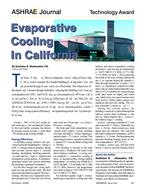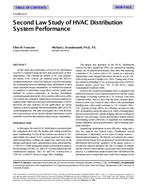Outlines the significant steps in the development and application of single-pipe hydronic systems. As a piping concept, it was first used to replace and to improve on the performance of two-pipe gravity hot-water-heating systems in the late 1800s and was basically experimental. Published data started appearing after the turn of the century and single-pipe hot-water-heating systems evolved as a standard form. Information from the 1929 ASHRAE Transactions showed that extensive research and development was carried out at Texas A and M University on both two-pipe and single-pipe gravity heating systems. The tabulated data that came out of this project established design procedures and provided the basis for Guide chapters on this subject. Unique and special pipe fittings, developed and patented in the 1920s had a major impact on the success of forced-flow single-pipe applications when in later years small circulating pumps were included as system components. Looking ahead, it is expected that the use of variable-speed circulators to replace diversion fittings may hold the answer to renewed interest in single-pipe system design for chilled-water applications as well as its long and successful performance in hot-water-heating systems.
KEYWORDS: year 1995, one pipe water heating, history, radiators, circulation pumps, circulators, pumps, variable speed motors, performance
Citation: Symposium, ASHRAE Trans. 1995, Vol.101, Part 1, Paper number CH-95-1-1, 525-527
Product Details
- Published:
- 1995
- File Size:
- 1 file , 1.1 MB
- Product Code(s):
- D-17267


